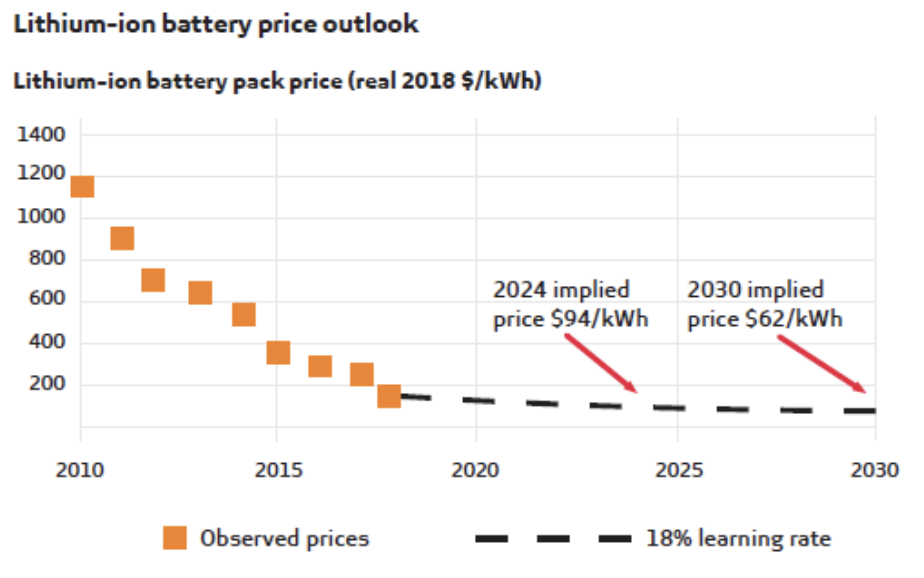Impact Partner Content: Absa | by Justin Schmidt, Head of New Sectors, Absa
In his fourth and final article, Justin Schmidt, Head of New Sectors at Absa, shares his views on the technologies that are changing the future of the energy sector, allowing for even greater adoption of renewable energy solutions.
The drive for lower carbon emissions
Transportation drives economic and social activity. It is one of the largest and fastest-growing energy sectors, responsible for 24% of global CO2 emissions.
Source: IEA CO2 Emissions from Fuel Combustion https://www.iea.org/subscribe-to-data-services/co2-emissions-statistics
As we transition from fossil fuels to cleaner sources of energy, there are many new, exciting, and cost-effective technologies becoming available.
Greater adoption of Electric Vehicles (EVs) will drive emissions down, but there is still a way to go in countries like South Africa. There is investment into infrastructure that allows owners of EVs to charge their vehicles but we will need to see greater support by addressing misconceptions around maintenance costs, reliability and driving performance, which act as barriers to EV uptake. Purchase prices are dropping globally and further barriers will need to be addressed, specifically in South Africa. These include:
Import taxes are higher on EVs vs Internal Combustion Engines.
There is an additional 17% ad valorem (luxury tax) because the battery price typically pushes the overall cost of the vehicle into this threshold.
Residential electricity consumption peaks at around 18:00. After-work charging of EVs could overload the residential electricity grid.
Current EVs available in the market do not cater for the emerging middle class.
Changes in regulations and policy could greatly influence the EV market, encouraging the uptake of EVs. This is evident in Norway, where favourable policy resulted in the country having the largest per capita uptake of EVs in the world. Examples of the incentives in Norway include:
No import tax on EV.
No VAT on EV purchases.
Free parking in public spaces for EVs.
Dedicated lanes for EVs and buses only.
Globally, there is a lot of interest in EVs. If you were to look at Tesla’s share price, you would think it was one of the most dominant and profitable car manufacturers in the world.
Modern EV manufacturers are supporting more than just reduced emissions on daily commutes. EVs store energy through lithium ion batteries and as more investment is made into this technology the prices continue to decline. This has a knock-on-effect on the energy storage market and the price of batteries we put into our houses and businesses, which will be a game changer.
Greater reliability and adoption of Renewable Energy, Battery Energy Storage Systems (BESS)
The business case for lithium ion batteries improves as prices continue to decline at a rapid rate (see graph below), enabling a solution for countries that are facing electricity-related challenges, including variable renewable energy generation on their power systems, load-shedding and steep increases in electricity costs.
Source: Bloomberg New Energy Finance
How BESS is used:
Peak shaving: The cost to the electricity grid increases as the demand for power goes up. Often a country’s demand is so high that “peaking generation” units, such as gas turbines, need to be used, which leads to greater generation costs during peak times and higher tariffs. Shaving this peak can be beneficial to both the utility, which saves on expensive fuel, and to the end customer, who saves on monthly electricity costs.
Increased solar self-consumption. The challenge with renewable energy, including solar, is that resource availability (e.g. the sun) does not always coincide with demand. BESSs allow for the storage of excess solar energy for later use, increasing the customers’ self-consumption of their solar Photovoltaic (PV) energy as illustrated below.
Source: www.redelectrical.co.uk
Arbitrage: The value of energy, as with any commodity, is inherently linked to demand. The higher the demand, the higher the price for energy. Capitalising on this pattern can be achieved by charging a BESS during low-demand periods at a low cost, with the energy stored and then later sold at a competitive price during high-demand periods. The difference between the two is an indication of the profit that can be obtained.
While there are many other interesting technologies that we could unpack in the renewable energy sector – such as biomass, biofuels and hydro power – the big game changer will be battery storage. As the lifespan and reliability of batteries improve, there will be greater adoption by utilities, households and businesses. EVs and BESSs will be key enablers to achieving affordable, reliable and sustainable energy for all while reducing global carbon emissions.






